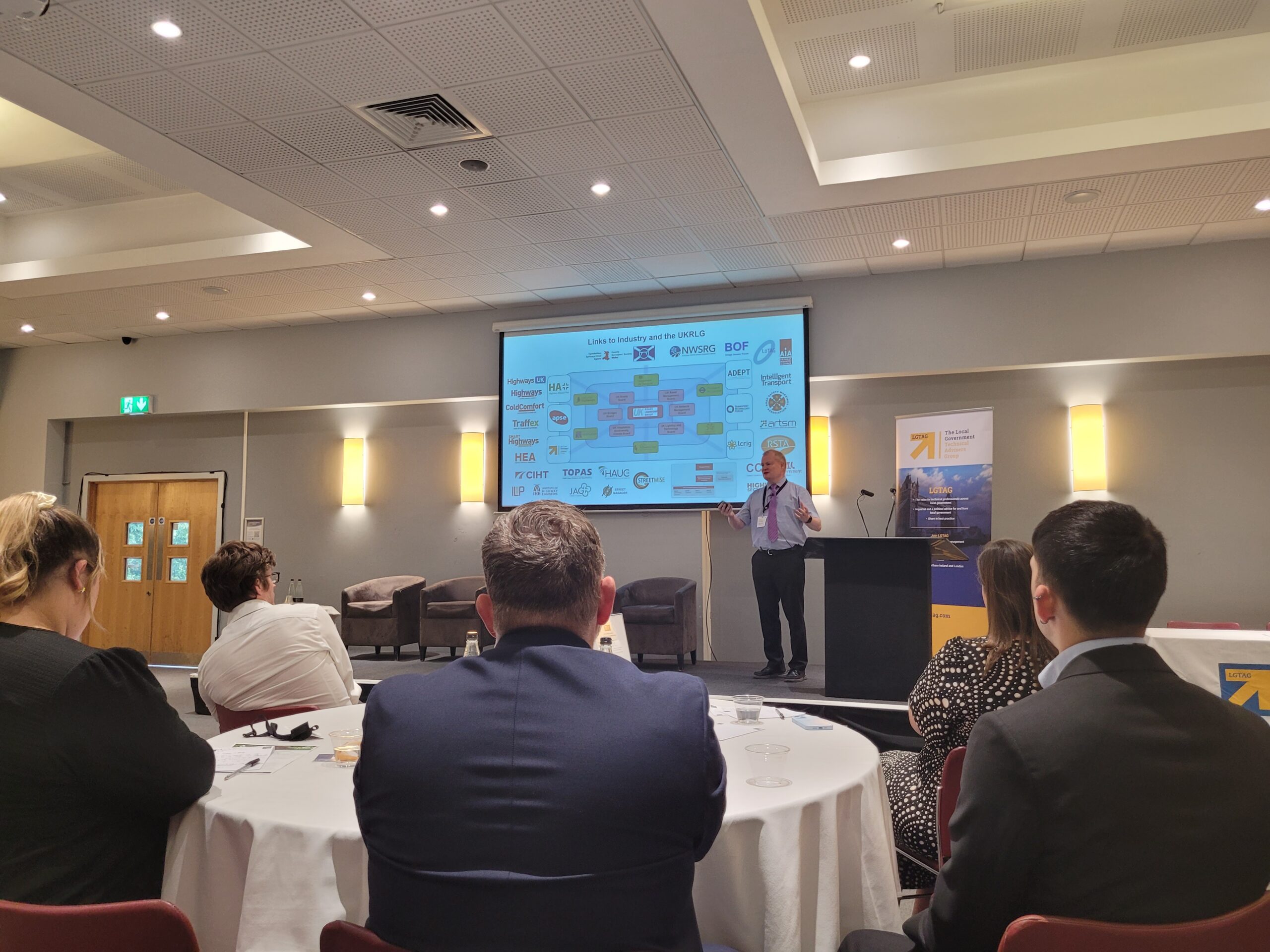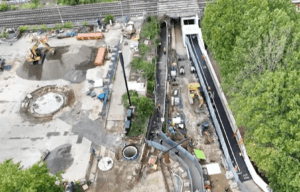That the Local Government Technical Advisory Group (LGTAG) Presidential Conference 2024 was held at a venue that attendees were virtually obliged to drive to was neither here nor there as the event got off to an auspicious, baton-passing start.
Outgoing President Amanda Richards welcomed incoming incumbent Sean Rooney, Head of Highway Service Maintenance at Oxfordshire County Council, appropriate given that the event was being staged at Oxford United FC’s Kassam Stadium, and Rooney took the opportunity to profusely thank his predecessor before expertly holding court with his opening gambit: “What are we going to do?”
Rooney told Highways Voices of his plans for LGTAG in an episode that will be available shortly, but he reiterated the event’s underlying motto of “From Research to Reality” with an emphasis on collaborative research and its crucial role as local authorities strive to improve. Of his year at the LGTAG helm, Rooney said that he was both “optimistic and excited”.
Rooney’s boss at Oxfordshire County Council (OCCs), Martin Reeves, followed with an impressively passionate plea for technology to be used wisely in the fields of research and innovation, highlighting that a number of Oxford University’s spin-offs are changing how the world looks and works on a daily basis.
The virtues of the technical excellence of the venue’s host city and county continued to be extolled by OCC Innovation Services head Laura Peacock who, under the banner of a Powered by Innovation slide, drew the audience’s attention to the city’s leading roles in the development of quantum computing, nuclear science, AI, CAVs, space-based innovation and, of course, pandemic vaccines. Peacock insisted that local authorities were key to the notion of promoting R&I by improving resilience, using public money as wisely as possible and supporting the local economy and partnerships.
The always-entertaining David Denner from the Welsh Government spoke eloquently about the STREETWISE initiative, and added that local authorities (not to mention those with national remits) need to make the best use of new technology and to evaluate its worth by undertaking a “tool versus toy” test. Denner also laid out the four challenges that are being tackled by using the latest ITS solutions, namely funding, recruitment, education and fear of change. The use of newer technology, he said, is often met with resistance due to a fear of change that has to be overcome in order for the other three tenets to be addressed.
Steve Fotios, the University of Sheffield’s Prof of Lighting and Visual Perception gave, with all respect to all other speakers and presenters (notably the gif-laden address by sponsor Multevo’s Josh Sweeney), the day’s most memorable talk, dragging the pre-lunch audience on an often thrilling, helter-skelter ride through the fascinating, ironically dark minutiae of the world of street lighting. Prowling the floor like a casually dressed caged, academic panther, Prof Fotios’s pleasingly confrontational presenting style shed seemingly much-needed light on the vagueries of street lighting standards – years of research has led him to assume that much of it has been ‘pure guesswork’.
Working together, it seems, has never been more important.
The presentations from the event can be accessed HERE.
(Pic – David Denner of the Welsh Government, by Kevin Borras)





















